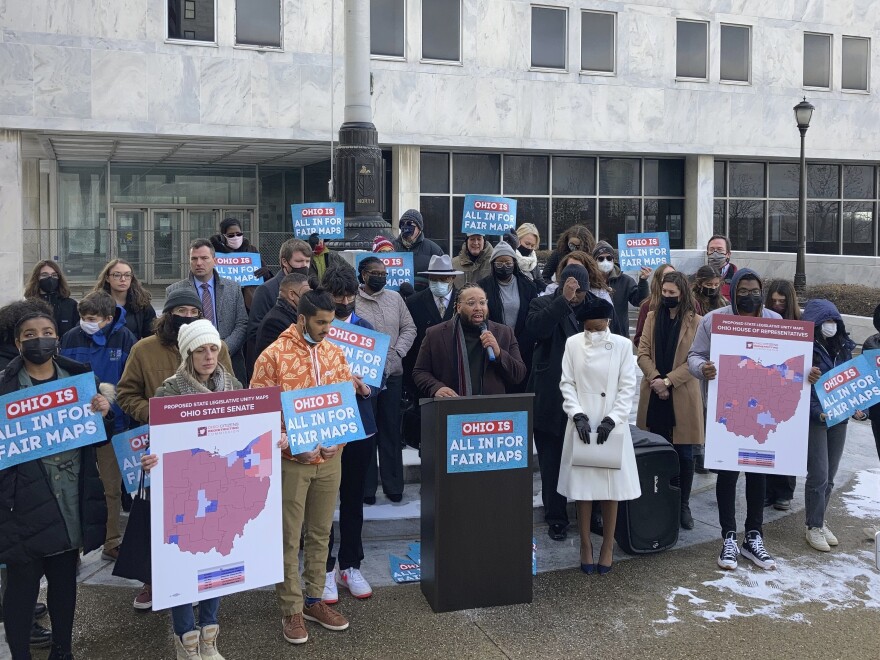Voters in Ohio are supposed to be able to vote in the state's May 3 primary — up and down the ballot — but with just six weeks to go, the voting districts for the state legislature haven't been decided.
Most states are wrapping up their redistricting process, but Ohio's Supreme Court has rejected the Republican-drawn state legislative maps three times for being unconstitutional, leaving candidates, voters and the state's entire voting infrastructure confused about what comes next.
After the court's latest map rejection, Ohio Secretary of State Frank LaRose, a Republican, told lawmakers and elections officials that it would be impossible under the current circumstances for state House and state Senate races to appear on the May 3 ballot.
"Our bipartisan elections officials were ready to conduct this election on time," LaRose wrote in a letter to lawmakers. "However, those boards are now left once again without clear districts to certify legislative candidates, and they're simply out of time."
For the first time, Republican and Democratic lawmakers are now working together to try and draw new districts that the Ohio Supreme Court may allow to move forward.
"We're going to take, hopefully, a little different approach to see if it works but I think it remains to be seen as to how well it all goes. We're hoping for the best," says House Speaker Bob Cupp a Republican and co-chair of the commission.
Looming over the redistricting process and questions about the primary is a federal lawsuit filed by a group of Republican voters. They are asking a panel of three federal judges to review the situation in Ohio and to ultimately order the Feb. 24 maps to be used in the May 3 primary.
Voters don't know who they're voting for
A concern among voting rights advocates is that the ever-changing nature of Ohio's redistricting process can cause whiplash for voters.

Jen Miller, executive director for the League of Women Voters of Ohio, says lawmakers should delay the primary so that confused voters can catch up with what's happening.
"Right now, voters don't even know who their candidates are. Candidates don't even know what their districts are. More time means everything," says Miller.
Candidates don't know where they're running
Incumbents and challengers don't know what their district lines will ultimately look like, or which communities will be in their districts.
State Rep. Thomas Hall, a Republican in southwest Ohio, says there's a lot of uncertainty when it comes to his district, which might end up adding 40,000 new constituents. Hall says that confusion goes all the way down to where they put yard signs.
"I do a lot of doors, and I do a lot of yard signs to get our message out. But right now, we're kind of in a holding pattern to see where we shouldn't be putting these signs. Obviously, we don't want to create further confusion to the voters," Hall says.
Leaders weigh moving the primary
Other states, such as North Carolina and Maryland, have already pushed back their primary dates due to delays in redistricting.
In Ohio, lawmakers have the prerogative to change the date of an election and so far Republican legislative leaders have been reluctant to postpone the May 3 primary.
Senate President Matt Huffman, a Republican, has suggested splitting the primary into two different dates and keeping the May 3 election for statewide and local races.
Others have pushed back on that idea, saying it would continue to pile up work for local boards of elections. A second primary could also cost the state as much as $25 million.
The Ohio Redistricting Commission has until March 28 to adopt a fourth set of state legislative district maps. Depending on a ruling in the federal court case, state lawmakers will have to make a decision on what to do with the upcoming May 3 primary without any time to put state legislative races on the ballot.
Copyright 2022 The Statehouse News Bureau

